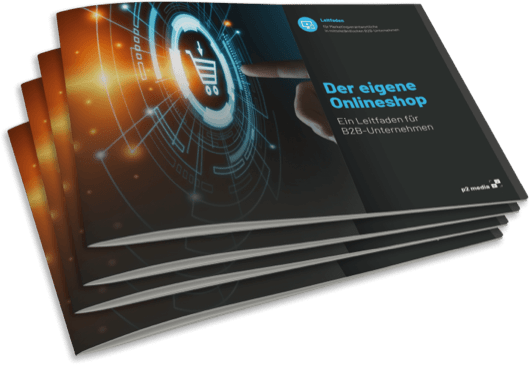The SEO (search engine optimization) of your website presence is today economically de facto highly relevant. Your (potential) customers, as soon as they register a problem or need that can possibly be solved with your services, are also on the lookout for appropriate solutions, primarily via one of the major search engines - especially via Google. The possibilities or requirements for improving the visibility within the ranking of the search engines are extremely diverse and must be considered as holistically as possible for maximum success. Backlinks and the corresponding link building are indeed still among the top three of the most important factors for the (Google) search engine ranking: This was even confirmed by the - otherwise quite information-shy - search engine leader itself in 2016. For all those who want to operate successfully with their website on the web, there is no way around the generation or the favoring of the emergence of backlinks. However, in order to be able to use corresponding processes really expediently, it must first be clear what backlinks are in the first place and how link building SEO works technically. This undoubtedly highly important prerequisite is, however, not given in many places. If you are also wondering why backlinks have such great importance in the search engine (Google) ranking factors, how link building works and which backlink types there are in principle, this article offers the right answers for you.
What exactly are backlinks and what makes them?
Backlinks are also called inbound links, external links, inbound links, backlinks or simply links - but the facts behind them are always the same:
Since the early days of Google, backlinks have been regarded as trust signals that strongly influence the qualitative evaluation of pages. The PageRank calculation, which serves as the basis for Google's search algorithm, analyses - in simplified terms - how backlinks between different pages on the web perform and derives from this how trustworthy the link building of certain websites are. This is still the case today - internally, a PageRank calculation is still carried out. However, this is far more differentiated and ultimately more powerful than the method originally defined in the PageRank patent.
One thing is certain: Backlinks and their link building are still one of the most important factors for the (Google) search engine ranking. However, the evaluation of those is now completely different than in the past. Today, quality clearly stands above quantity. That is to say, high-quality backlinks are generally attributed a higher significance than the pure number of backlinks. A few quality links can certainly have a greater benefit for advancement in the (Google) search engine ranking than very numerous, but inferior links. The quality of a backlink is determined by various characteristics.
Ingeneral, organic backlinks have the greatest power, i.e. those that arise completely naturally due to the actual quality of a page. When building backlinks today, it is therefore essential to focus on high-quality, trustworthy backlinks or - to put it another way - on generating backlinks that are as natural as possible or at least appear natural.
Only about ten years ago, it was comparatively easy to give pages a significant push in the Google ranking through backlinks. It was practically enough to simply buy cheap links and direct them to your own domain. Concerning methods to improve the SEO Google ranking were practiced successfully for a long time and were of course a thorn in Google's side. Such spam links could finally be detected and punished in 2012 with the launch of the Penguin update. Through a constant further development of the Penguin update, it is now possible for Google to very precisely identify low-quality purchased links and also other link activities that violate the guidelines of the search engine. The purchase of backlinks is strictly forbidden according to Google Webmaster Guidelines or is evaluated negatively accordingly.
What types of backlinks are there and how do they affect page ranking?
The fact that not all backlinks are the same was already made clear in the previous section. A qualitative link building on your company website should be built according to Google SEO relevant aspects with the following possible backlink types and their specific characteristics.
High-quality backlinks serve in the SEO Google ranking, among other things, as a sign of relevance and trustworthiness. In some cases, however, backlink providers do not want to vouch for the quality of a website in this respect, but still have to link to it. Then the attribute rel="nofollow" is used. This tells Google and Co. that the link in question should not pass on any trust (PageRank). Nofollow links do not pass on PageRank, they are nevertheless not insignificant in terms of Google ranking. Only in September 2019, Google announced that a further development of the Nofollow attribute took place and Nofollow links are now quite treated as (Google Ranking) hints. As is so often the case, the group leaves a lot of air for speculation in its statement. In the past, however, there were already findings that nofollow links as part of a natural link profile can have positive effects, at least for linking pages. It can be assumed, however, that Google also uses them in some way to evaluate the linked page. For example, it always has a specific meaning if a page receives exclusively or increasingly nofollow links - and it can hardly be assumed that such or similar properties are not analyzed by Google.
It can be very helpful to pay an influencer or blogger who then promotes one of your content modules or delivers a review of one of your services in return. As soon as a link is created on a monetary basis, the attribute rel="sponsored" should be used. This informs Google that it is not an organic backlink, so that a possible penalty by the Google search engine resulting from unnatural link structures can be excluded. In terms of Google SEO ranking, sponsored links are not much help. That is, you cannot achieve a push in page ranking with such links or the "sponsored" attribute - they practically only serve to reduce the risk of a penalty. The logical question is: Why should such links be set at all? The answer is relatively simple: in terms of online marketing, sponsored links are actually a very good way to increase the reach of your own brand.
The attribute rel="ugc" distinguishes so-called user generated content (UGC). The latter are, for example, posts from forums or blog comments. rel="ugc" is used when such content includes a backlink. With this attribute, backlink providers inform Google that the link was placed by a user and not by the website operator itself. Although backlinks from forums generally have little influence on the Google SEO effect of the website, they have repeatedly been shown to have a certain relevance for Google rankings in recent years. One thing is certain - and this is also known or recognized by the search engine prime - that forum and comment links often originate from the operator of the link-retaining page. If such links are registered on a large scale, Google can actually interpret this as a negative signal. This can be ruled out with rel="ugc". Benefits for the SEO Google ranking also offer backlinks with this attribute hardly. Similar to sponsored links, however, you have a potentially large positive influence on the reach of your brand.
The most rewarding backlinks are those that arise apart from strategies. This is the case, for example, when a website owner becomes so convinced of the content of a page that he or she wants to share it.
Here, without any specific strategic influences regarding link building, a person has decided that the linked website deserves traffic and authority. This is based solely on the subjective judgment of the backlink giver. He or she decides that the linked content is potentially useful for other people in his or her business or interest group, without any thought of manipulating Google's search engine algorithms.
The key to such backlinks is unique and highly value-added content.
Toxic backlinks, also called "bad backlinks" or "unnatural backlinks", can have a highly negative impact on the Google ranking of your website. These are links that originate from low-quality or highly off-topic or even spam-suspicious pages. Even undoubted spam links or other links that directly violate Google's guidelines are toxic backlinks. Of course, such backlinks should not be favoured or even forced, but rather recognised and excluded. In fact, many websites have such backlinks without their operators knowing about it. The reasons for this can be varied. It is possible that a once good backlink source has lost much of its Google SEO relevance. Or spam links that were actually set years ago with a positive effect were simply forgotten. To find out if toxic backlinks are present, you can choose from a variety of tools. Finally, the links are usually devalued either by direct contact with the backlink provider or by uploading a disavow file within the Google Search Console. The disavow file contains specific data of the respective toxic backlinks and serves as an instruction to Google, which links should no longer be considered for the ranking in the future.
How can you check your own backlink profile?
There can be several reasons why you should analyze a backlink profile. Filtering out and devaluing toxic backlinks is the most obvious concern. But the intention here can also be an optimal distribution of the link juice received within your own website construct, the simple erudition of pages that deserve a push of backlinks or the optimisation for obtaining them, or a competitor evaluation to see how many backlinks are necessary for competitiveness or from which sources they should come. Basically, you have two options to check backlinks of a website: the Google Search Console or a backlink check from a third-party provider. Via the Google Search Console you can get data on your organic traffic and the overall performance of your website. After logging in, you will find the menu item "Links" in the sidebar and there, under "External links", the total number of your backlinks. Furthermore, you can view various reports - most linked pages, most linking pages, most linking text. From these, factually very SEO helpful insights can be drawn for your own backlinks and link building. For example, if you want to perform a backlink analysis to spot your competitors' strategies and sources, you'll need a third-party tool. This gives you the opportunity to examine foreign domains with regard to the topic relevance of existing backlinks, the quality of anchor texts, the use of rel attributes and other factors. Very interesting are the options to compare the authorities of one's own backlinks with those of the competitors as well as the possibility, which is certainly given with some tools, to automatically get additional potentially very beneficial backlink sources shown at home and abroad.
Our support around the topic of search engine marketing
- Analysis of how you perform from the perspective of the search engine and what reputation your pages have.
- Development of anSEO strategy for your website or online shop.
- SEO site check as a status analysis to uncover technical errors and create a basis for necessary onpage optimizations.
- SEO-compliant text creation- conception of content that is classified as relevant by both your target groups and the search engine.
For holistic and successful online marketing, we are also happy to take care of the following topics:
Oliver Parrizas will be happy to answer any questions you may have on the subject. +49-800-911-91-91







